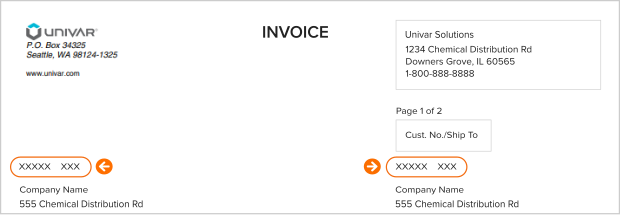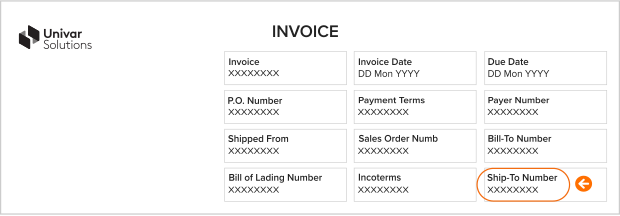We’re here to provide you with more information or help answer any questions you might have. Send us a note and we’ll get back to you as soon as possible.


Today’s consumers are looking for effective protection from sun damage. But they're also looking for far more than a standard Sun Protection Factor (SPF) to add to their daily beauty routines—cue the host of hybrid skin and suncare products dominating the category.
Skincare products include formulations designed for the care and protection of the skin, including sunscreen. In 2024, the market value of the global sunscreen industry will rise to an anticipated $10,790 million compared to $8,489 million in 2019. Brightening specialties are a leading sector in suncare, followed by acne treatment, anti-aging products, and skincare sets.
Suncare is seeing advanced formulas that offer pleasantly-scented lightweight textures, skin-friendly formulations, tinted coverage, and issue-specific ingredients to produce sunscreens that work for various skin tones, textures, and needs.
Here’s everything you need to know about ultraviolet (UV) protection skincare formulas, including effective ingredients and other formulation tips. In this article, we’ll take a more than skin-deep delve into what sunscreens do, the benefits of sunscreen in skincare products, and tips on what ingredients to use for an SPF of 20, 30, and 50-plus.
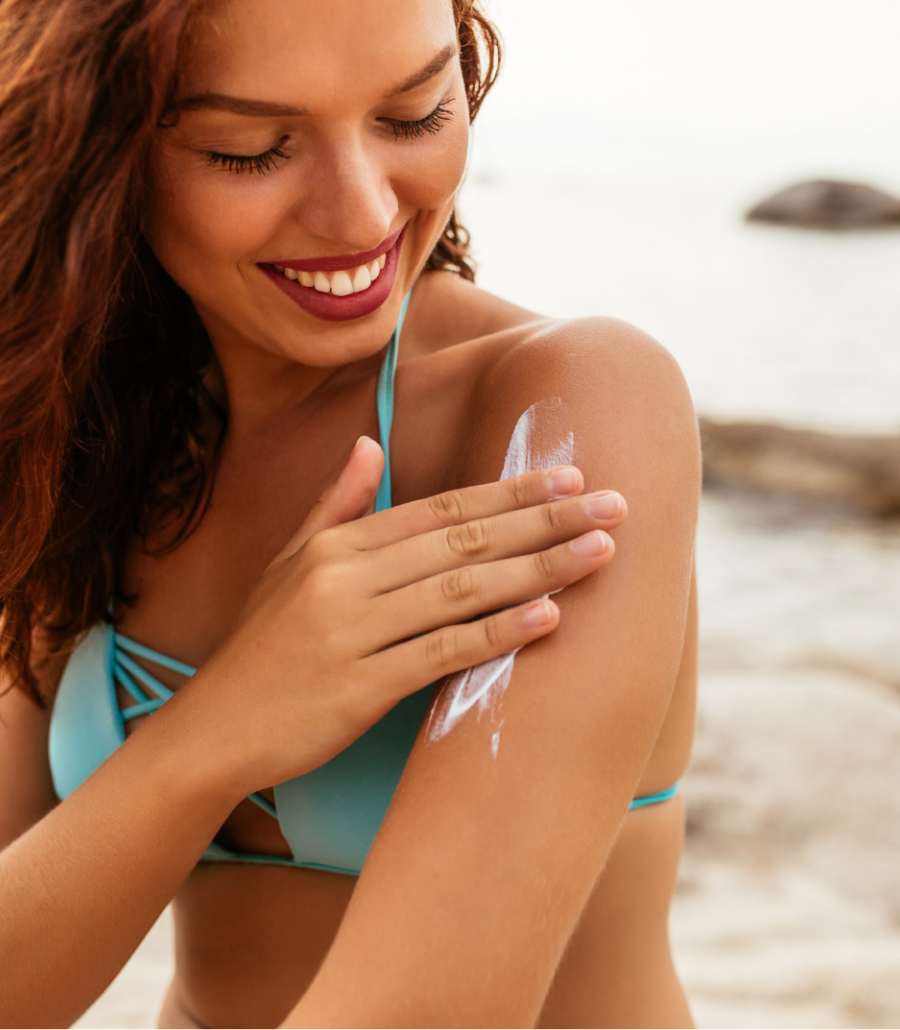

What Does Sunscreen Do, Exactly?
Sunscreen is a topical product used on the skin to protect it from the sun’s ultraviolet (UV) radiation. UV radiation penetrates the outer layers of the skin and can enter the skin’s deeper layers, where it may damage or kill skin cells. Sunscreen contains ingredients that absorb or reflect UV radiation, preventing the sun's rays from penetrating the skin and causing sun damage.
What the World Wants From UV Protection Skincare
The ever-increasing concerns surrounding UV exposure are fueling the consumption of suncare products globally. The sunscreen category is clearly bright as brands seek to meet the demands of today’s informed, convenience-seeking and skin-conscious consumers while raising awareness about the importance of wearing sunscreen daily.
Let’s take a look at some statistics from around the globe:
- In the US, 61% of suncare users are interested in skin product innovations designed to protect the skin from blue light. Also, 50% of users expect their skincare routine to protect their skin from the sun.
- Among suncare users in Germany, 47% are curious about sun protection products that protect the skin against environmental stress.
- Over half (57%) of sunscreen product users in China agree that sunscreen products should provide more skincare benefits in addition to UV protection. In China, 41% of suncare users associate protection from external irritants with the strong protective effect of sunscreen.
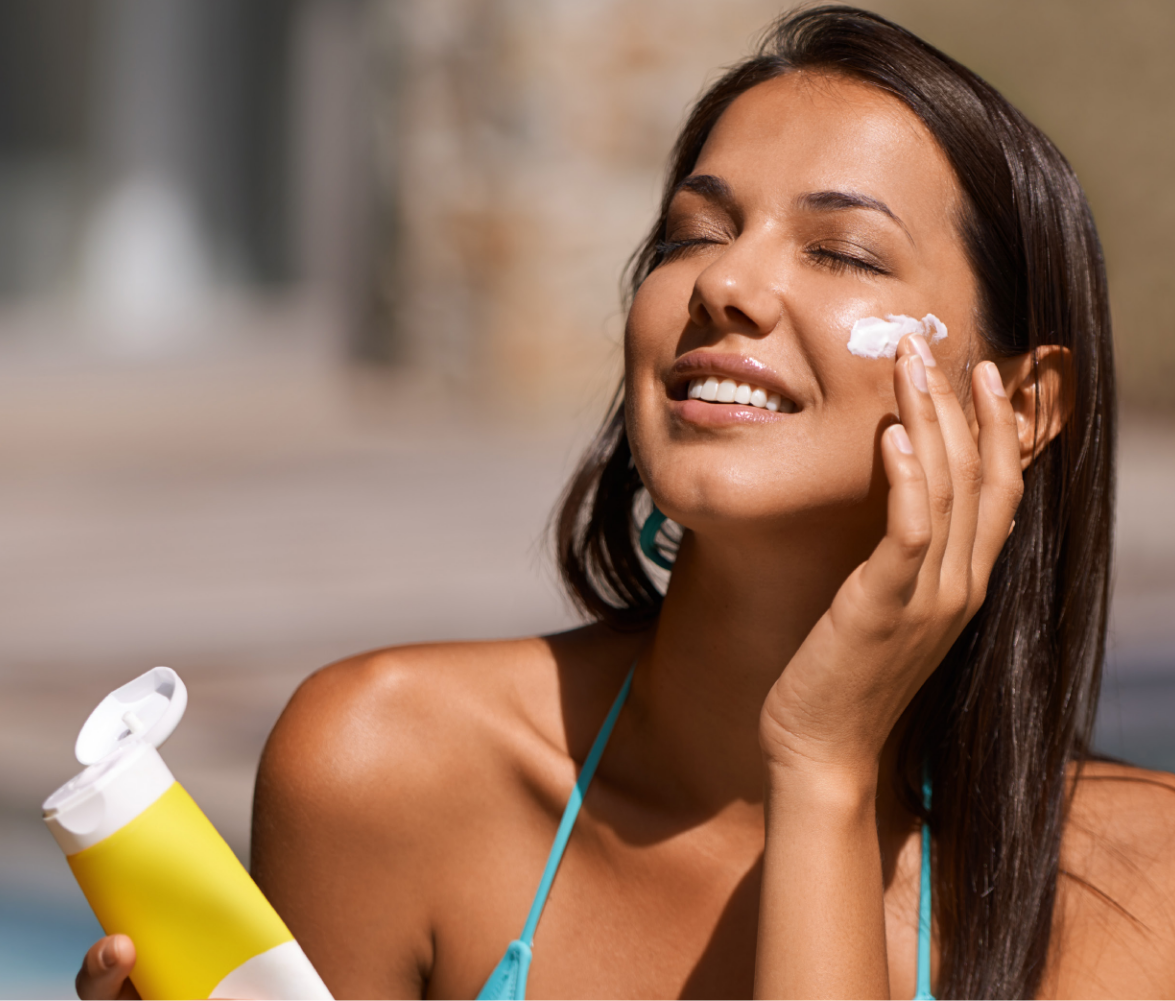

Benefits of Using Sunscreen In Skincare Products
It’s natural to love the sun, but it’s also vital to protect the skin from potentially harmful effects. Sunscreen is more than just a product to place in consumers’ skincare collection. Applying sunscreen forms part of our daily skincare routine, protecting our skin against damage from the sun’s UV rays and helping to maintain its health and appearance.
Wearing UV protection sunscreen on a daily basis provides an invisible barrier against avoidable skin damage caused by sun exposure. SPF is a key part of a beauty regime and promotes healthy skin. But it’s not only relevant during the summer months; sunscreen is necessary all year round to protect the skin from damage and the strength of UV rays.
In summary, here are the main benefits of sunscreen in skincare products:
- It protects the skin from the sun’s rays.
- It helps lower the risk of skin diseases and cancer.
- It prevents sunburn and sunspots.
- It contributes to achieving an even skin complexion.
- It helps maintain a healthy appearance.
- It reduces the visible signs of aging.
Sun Protection Factor (SPF) measures how well a sunscreen protects the skin from UVB rays. Exposing skin to this type of radiation can cause sunburn, skin damage, and can contribute to the development of skin cancer.
As well as indicating their SPF, sunscreen products often also include information detailing if they protect the skin against UVA rays. Logos and claims are popular ways to communicate this information. UVA rays also penetrate deeper into the skin and play a more significant role in premature changes linked to skin aging (or photoaging), such as wrinkles. These rays can also result in the development of skin cancers. There are approximately 500 times more UVA rays in sunlight than UVB rays.
Here, we look at the best ingredients in UV protection skincare to achieve an SPF of 20, 30, or 50-plus.


1. Niacinamide
Niacinamide, or nicotinamide, is a water-soluble topical version of vitamin B3. An essential nutrient for the body, it helps to develop proteins in the skin and locks in moisture.
Along with good skin health, niacinamide protects the skin from sun damage. The active ingredient works in formulas to repair and restore healthy skin cells while simultaneously protecting the cells from UV damage.
Topical niacinamide products come in a serum format. Using the ingredient as a serum can complement existing cleansing, toning, and moisturizing treatments by tackling specific skincare concerns and conditions. According to Mintel GNPD, the percentage of new suncare and sunless tanning product launches with niacinamide increased by 128.6% in the US from 2020 to 2021.
Although the amount of niacinamide used in formulations varies, it’s often approximately 5% or less in sunscreen formulations. Research studies have suggested that formulas with 5% of the ingredient effectively treat damaged skin from sun exposure. When manufacturing sunscreen products for users with sensitive skin, formulators may want to use niacinamide in a lower concentration.
Niacinamide can be paired with other active ingredients to maximize its effectiveness to achieve optimal results. For example, niacinamide serum can work well with hyaluronic acid as it can increase product absorption.
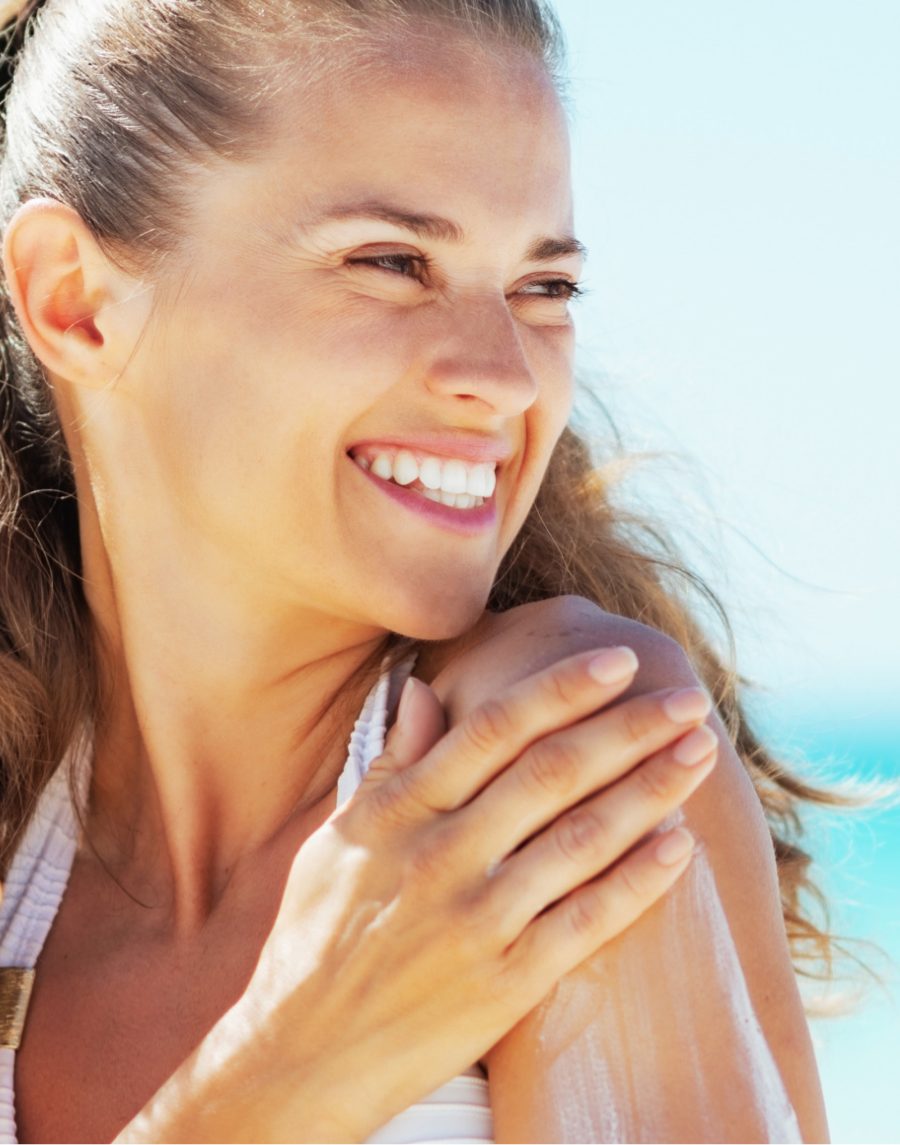

2. Hyaluronic Acid
Hyaluronic acid (HA) is produced naturally in the body as a clear, gooey substance. The naturally-occurring glycosaminoglycan is formed from long, unbranched carbohydrates, or a group of sugar molecules, called polysaccharides.
HA provides hydration and enables the body to retain moisture—one of its star qualities. The sun often causes skin to become dry and leathery; this is where sunscreen formulations with HA come in as they moisturize the skin (especially its top layer) when it doesn’t have enough water. The ingredient’s role is to support and lubricate the body and is produced in the body’s skin, eyes, and connective tissues.
The presence of HA gives skin structure and creates a plump and hydrated look. The natural HA in our body reduces over time with age. However, a leading ingredient in skincare and popular in sunscreen products means it’s possible to experience the benefits of HA. It works to counter the aging process that can be sped up due to UV radiation from the sun.
The percentage of new suncare and sunless tanning products with sodium hyaluronate (a type of HA) increased by 22% in the US from 2020 to 2021. A recent study in 2021 found that HA showed excellent UV protection in UVA and UVB regions and significant application potential for hydrogel-type sunscreens.
There are three main types of hyaluronic acid:
- Hydrolyzed hyaluronic acid. It penetrates the skin and offers some moisturization so it’s ideal for consumers with oily or combination skin who don’t want to add too much moisture to their skin.
- Sodium hyaluronate. It enters deeper into the skin’s layers and is typically found in serum formats. However, it’s not long-lasting.
- Sodium acetylated hyaluronate. It contains and builds upon the benefits of sodium hyaluronate. It provides more moisturization properties and is ideal for consumers with dry skin or who live in dry climates.
The ingredient is found in a wide range of skincare products, including moisturizers, serums, sheet masks, eye creams, cleansers, and lip treatments.
3. Butyl Methoxydibenzoylmethane (BMBM)
Butyl Methoxydibenzoylmethane, or BMBM, is a synthetic, oil-soluble sunscreen used to protect the skin from the sun. The ingredient is known for being a sun filter and is formulated for the skin, scalp, and hair. It provides a defense against sun exposure by preventing the absorption of UVA or UVB rays.
As the ingredient is hydrophobic (repels or fails to mix in water) and is oil-soluble, BMBM is applicable in water-repellent and water-resistant formulations. Approved for 3% use in formulations in the US and 5% in Europe at present, BMBM provides numerous benefits, including its ability to absorb UV light over various wavelengths and transform it into less damaging infrared radiation (heat). In addition, BMBM in product formulations also prevents natural and synthetic hair dyes from fading in the sun and improves chemical hair color stability.
BMBM is often used in formulations with octyl methoxycinnamate, a UVB screening compound, to maximize protection from the sun. BMBM is also often paired with natural ingredients such as Rubus Idaeus (raspberry) seed oil to provide additional qualities such as antioxidants, vitamins A and E, as well as phytosterosis capabilities, which help the skin retain hydration and moisturization.
4. Octocrylene
Octocrylene is a chemical sunscreen ingredient typically found in UV protection skincare products. A chemical sunscreen ingredient is one that works by protecting the skin against sun damage once it’s absorbed into the skin.
The ingredient protects the skin from both UVA and UVB rays and helps stabilize and improve the efficacy of other chemical sunscreen ingredients in formulations—making it a popular and frequent choice for UV protection sunscreens. Octocrylene is also known to increase the water-resistance of sunscreen and helps protect the skin from sunspots and skin aging.
Octocrylene is approved by the Food and Drug Administration (FDA), and is considered safe as a UV filter when used individually and for combined use of sunscreen cream/lotion, sunscreen pump spray, face cream, hand cream and lipstick products by the European Commission’s Cosmetics Regulation in concentrations of up to 10%, following guidance from the Scientific Committee on Consumer Safety (SCCS).
The ingredient is often used in formulations with other chemical sunscreen ingredients, such as avobenzone, a photo-unstable UV filter, to offer extra stability in UV protection skincare formulas. Currently, the ingredient is approved as safe for its intended use in the US, Europe and Australia.
In recent years, however, questions and concerns have been raised about the safety of both octocrylene and avobenzone chemical ingredients in the US, with the FDA engaging in reviews to ascertain the safety of these ingredients in sunscreen formulations by exploring their absorption rates into the body and the long-term effects of absorption.
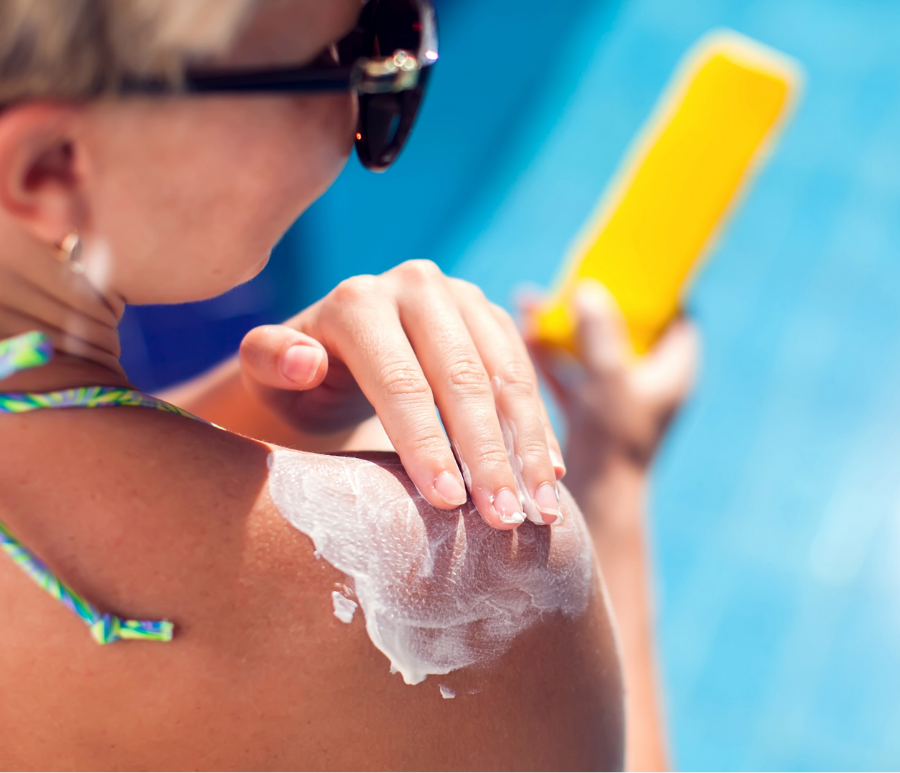

5. Titanium Dioxide
Titanium dioxide, a popular ingredient in physical sunscreens, is a broad-spectrum filter, which means it provides proportional UVA and UVB protection. However, it’s not able to protect the skin from long UVA1 rays, which refers to UV light in the range of 340–400 nanometers (nm).
Titanium dioxide is used in many SPF-specific applications, including makeup, pressed powders, and lotions. Physical formulas rely on minerals such as titanium dioxide and are designed to sit on the skin and deflect the sun’s rays to protect the skin from damage.
Selected for its ability to prevent sun damage, the US FDA has labeled titanium dioxide as an ingredient that is generally recognized as safe and effective (GRASE). An ingredient that is labeled GRASE is one that the FDA classifies as safe for human use. A cream or lotion form is recommended as researchers have stated that using titanium dioxide in powder or spray forms may be hazardous.


6. Mexoryl SX
Although the name may be unfamiliar, Mexoryl SX is a common and popular ingredient in UV protection skincare products. Mexoryl SX is a UV filter that appears in chemical sunscreens and is known for its sun damage prevention qualities.
Mexoryl SX can block UVA rays, which are longwave, penetrate the skin deeper, and can lead to skin aging. A 2008 studies review found that Mexoryl SX effectively absorbs UV rays and acts as an ideal ingredient for preventing skin damage. Mexoryl SX is often paired with the unstable oil-soluble ingredient avobenzone to provide enhancing and stabilizing properties in sunscreen formulations.
7. Zinc Oxide
Zinc oxide is a mineral-based active ingredient used in sunscreens. Physical UV protection sunscreens require minerals such as zinc oxide and protect the skin by scattering the sun’s rays, preventing potentially harmful UV rays from reaching the skin.
The FDA has classified zinc oxide as a GRASE (generally recognized as safe and effective) ingredient when used in concentrations of 25% or less in sunscreen formulations.
Available for physical sunscreen formulations, zinc oxide is deemed an effective, relevant, and photostable sunscreen choice for sensitive skin users. Zinc oxide can also effectively work as a barrier against the sun for babies and young children whose skin is not as developed and mature as adults’ skin.
Since zinc oxide is used as a skin protectant, it rarely irritates the skin and can, therefore, be used on any skin type, including extremely sensitive skin that can experience redness and rosacea. Zinc oxide is also known to be a non-comedogenic (non-pore-clogging) ingredient, signaling that it's unlikely to result in breakouts or acne. The ingredient has antimicrobial properties too, which can aid in healing burns and other skin damage that results from sunburn.
8. Ceramides
Ceramides are a class of long-chain fatty acids called lipids. These are naturally found in skin cells and make up around 50% of the outer layer of skin, called the epidermis. These acids connect with other molecules in the skin to encourage cellular function and produce a barrier to avoid permeability. The act of shielding the skin helps keep its moisture, preventing dryness and irritation.
A recent study explored the benefits of using ceramide. Its researchers explored the impact of UV exposure on the skin and strived to understand the protective efficacy of a sunscreen containing ceramide and moisturizing cream. They found that creating a skincare regimen that includes a moisturizer and sunscreen formulated with ceramides can help protect against UV-induced skin barrier damage and improve overall skin barrier health against chronic sun exposure.
The ingredient is used in UV protection skincare creams and moisturizers and can be used before applying sunscreen. Sun damage and age both lower the effectiveness of the skin’s natural ceramides and can eventually diminish them, resulting in a weaker skin barrier. The results are drier, rougher skin, wrinkles, irritation, redness, and visible signs of dehydration.


Formulate UV Protection Products With Beauty Ingredients
Shop Ingredients for UV Protection Skincare Products
Curious about which ingredients are the most effective, complementary, and popular for UV protection sunscreens?
Check out our portfolio for the best ingredients to produce a sunscreen formulation with an SPF of 20, 30, or 50-plus.
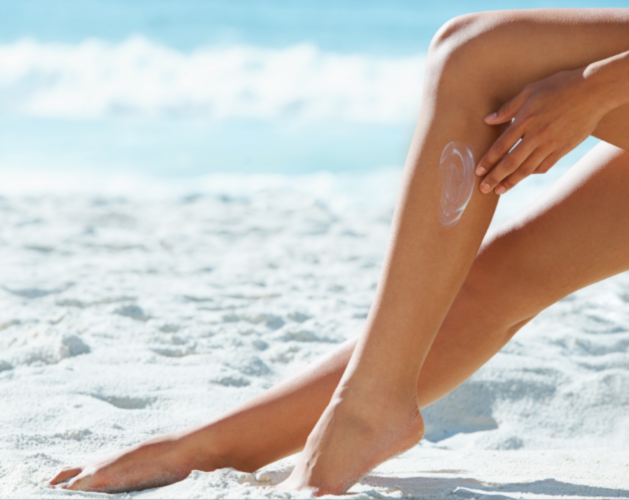



Contact Us for Formulation Support
Creating an efficacious and sought-after formula involves research and development, creativity, formulation knowledge, and a splash of innovation.
Team up with an established partner to create a UV protection skincare formulation that today’s suncare consumers are looking for.
8 Sunscreen Ingredients for UV Protection
Tunnel car wash cleaning – This first section gets all the soil and organic materials off the car. It uses surfactants to reduce the water's surface tension so that water droplets lay flat to get better coverage to clean the car with optimal results. It sets the vehicle up for a shiny, durable protection layer on the finishing side.
| Tunnel Car Wash Cleaning Applications | |
| Bug Remover | Base, anionic surfactants, nonionic surfactants, chelating agents, anti-redeposition agents, solvent |
Wheel Cleaner | Base, anionic surfactants, nonionic surfactants, chelating agents, anti-redeposition agents, solvent |
Alkaline/High pH Presoak | Base, anionic surfactants, nonionic surfactants, chelating agents, anti-redeposition agent |
Boosters | Boosters can be used to customize presoaks or add additional capabilities |
Low pH Presoak | Acid, anionic surfactants, nonionic surfactants, anti-redeposition agent |
Neutral Foamer | Anionic surfactants/amphoteric surfactants, chelating agents |
Conditioner | Anionic surfactants/amphoteric surfactants, dye, fragrance, chelating agents, or ph adjustment |
Tunnel car wash finishing – This second section of the process involves polishes, protectants, and waxes to create more surface tension changes for droplets at the end of the wash. A more hydrophobic surface is needed so the droplets will bead up for effective drying. These are options for consumers to select as service package add-ons that are regularly not included with a car wash.
For example, triple foams provide more color fragrance, or top packages have more protectants, which last for about a month. Silicone resins and functional silicones protect the car for a glossy, smooth finish and help with durability by offering increased resistance to micro scratches and debris on the road.
| Tunnel Car Wash Finishing Applications | |
| Polish | High levels of foam using amphoteric surfactants, color, and fragrances. Contains a gloss agent: silicone or wax emulsion |
| Carnauba Wax | carnauba emulsion, amphoteric surfactants |
| Rain Protectant | silicone emulsions, cationic surfactants, amphoteric surfactants, nonionic surfactants, EB |
| Ceramic Seal | silicones - amino functionals, cationic surfactants, amphoteric surfactants, nonionic surfactants, EB |
| Drying Agent | Mineral seal oil, nonionic surfactants, cationic surfactants, EB |
| Tire Shine | Silicone (PDMS), wetting agent, rheology modifier, either solvent or water, and emulsifier) |
| Spot Free Rinse | RO Water |
For tunnel car wash equipment performance, it's about striking a balance to ensure the vehicle is cleaned best BEFORE the finishing process. Otherwise, it will magnify and preserve the dirt under these protective layers. Since both applications are doing different things with the surface tension, facility owners need to be sure that the second part of the process begins at the right time to make vehicle surfaces more hydrophobic and shed water rather than further spreading it out.
Resources
References:
Aquabio, Car Wash History: From Simple Beginnings to Modern Day Features: https://aquabio.co/uncategorized/blog/car-wash-history-from-simple-beginnings-to-modern-day-features/
Automatic Vehicle Wash, Tunnel Systems: https://avwequipment.com/equipment-category/tunnel-systems/
Carwash.com, 5 long-lasting benefits of carwashing: https://www.carwash.com/5-long-lasting-benefits-carwashing/
Carwash.com, Going green: Save electricity, water and money: https://www.carwash.com/going-green-save-electricity-water-and-money/
Carwash.com, Lessons in carwash tunnel layout: https://www.carwash.com/lessons-carwash-tunnel-layout/
Detail Pro POS, 20 Car Wash Statistics in 2021 That Will Surprise You: https://www.detailpropos.com/blog/car-wash-statistics/
Focusedcarwash.com, Car Wash Industry Statistics: https://focusedcarwash.com/wp-content/uploads/2017/09/industry-statistics.pdf
How It Works, How does a car wash work?: https://www.howitworksdaily.com/how-does-a-car-wash-work/
JBS Industries, 10 Trends You Should Know About the Car Wash Industry: https://www.jbsindustries.com/blog/10-trends-you-should-know-about-in-the-car-wash-industry/
JBS Industries, Best Car Wash Add-Ons: https://www.jbsindustries.com/blog/car-wash-add-ons/
PSD Codax, Tunnel Car Wash Systems - A Beginner's Guide to Tunnel Car Wash Systems: https://www.psdcodax.com/tunnel-car-wash-systems-a-beginners-guide-to-tunnel-car-wash-systems/
Sunset North Car Wash, Here's What (Tunnel) Car Washes Are Really Doing to Your Car: https://sunsetnorthcarwash.com/2022/11/28/heres-what-tunnel-car-washes-are-really-doing-to-your-car/
Synchrony, 5 Reasons to Visit the Car Wash - and What to Watch Out For: https://www.mysynchrony.com/blog/automotive/5-reasons-to-visit-the-car-washand-what-to-watch-out-for.html
Thompson Sales Company, Wash Your Car Yourself or Take It Somewhere: https://www.thompsonsales.com/wash-your-car-yourself-or-take-it-somewhere/
Tommy's Express, Do clean cars improve gas mileage?: https://tommys-express.com/blog/do-clean-cars-improve-gas-mileage/
Way.com, Tunnel Car Wash - All you need to know: https://www.way.com/blog/tunnel-car-wash-all-you-need-to-know/
Way.com, All you need to know about clean cars and fuel efficiency: https://www.way.com/blog/clean-car-and-fuel-efficiency/
Western Carwash Association, Water Conservation: https://www.wcwa.org/page/WaterConservation





